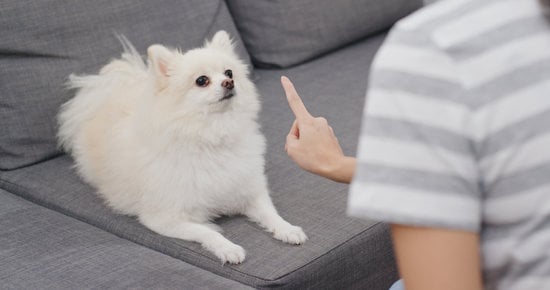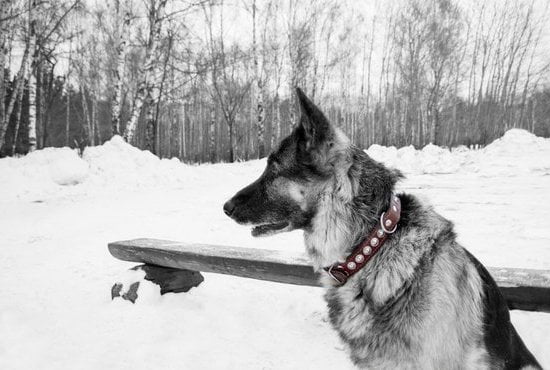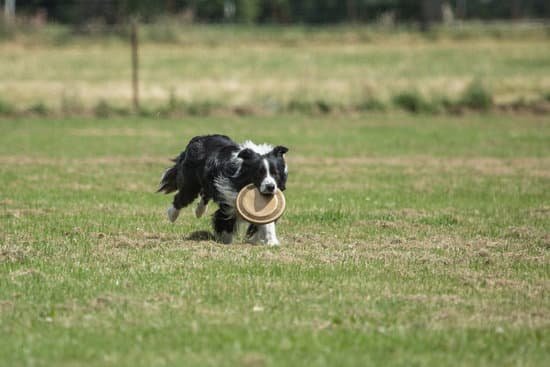Crate training can be a valuable tool for dog owners, helping to provide a safe and secure space for their furry companions. However, when faced with an older dog who also struggles with anxiety, the process can become more challenging. In this article, we will explore how to crate train an older dog with anxiety, taking into account their specific needs and triggers.
Canine anxiety is a real and often overlooked issue that can greatly impact a dog’s well-being. It manifests in various ways, from excessive barking and destructive behavior to panting and pacing. These symptoms of anxiety can make crate training a daunting task for both the dog and the owner.
Understanding the effects of canine anxiety on crate training is crucial in developing an effective plan. By acknowledging these challenges upfront, we can tailor our approach to meet the unique needs of our anxious older dogs. Through patience, consistency, and utilizing specialized techniques, we can create a positive environment that fosters trust and reduces anxiety levels during crate time.
In the following sections of this article, we will delve deeper into assessing anxiety triggers specific to your older dog and creating a safe and comfortable crate environment. We will discuss step-by-step approaches to gradually introducing your dog to the crate while implementing positive reinforcement techniques. Additionally, we will explore how crate training can address separation anxiety in older dogs.
By understanding canine anxiety and its impact on crate training, we can guide our older dogs towards feeling secure and calm in their crates. Together, let us embark on this journey of compassionately addressing our furry friends’ fears while establishing healthy routines that promote relaxation during crate time.
Assessing the Specific Anxiety Triggers in Your Older Dog
Anxiety triggers can vary from dog to dog, so it is important to assess the specific triggers that may cause anxiety in your older dog. By identifying these triggers, you can better tailor your crate training approach to address their individual needs and help them overcome their anxiety.
Observing Behavioral Patterns
To assess your older dog’s anxiety triggers, start by observing their behavior in different situations. Take note of any signs of distress such as pacing, panting, drooling, trembling, or destructive behavior. Pay close attention to when these behaviors occur and what may have triggered them. This will give you valuable insights into the specific anxiety triggers affecting your dog.
Consulting with a Professional
If you are having difficulty identifying your older dog’s anxiety triggers or feel unsure about how best to address them, consulting with a professional such as a veterinarian or animal behaviorist can be beneficial. These professionals have expertise in understanding canine anxiety and can provide guidance tailored specifically to your dog’s needs. They may also be able to recommend additional resources or techniques that could be helpful in addressing your dog’s anxiety.
Creating a Trigger Checklist
Once you have identified some potential anxiety triggers for your older dog, create a checklist that lists them out. This will help you keep track of the specific triggers you need to address during crate training. By having this checklist on hand, you can refer back to it throughout the training process and ensure that each trigger is adequately addressed.
By assessing the specific anxiety triggers in your older dog, you can effectively tailor your crate training approach and provide the necessary support and comfort needed for them to overcome their anxiety. Remember that every dog is unique, so patience and understanding are key when implementing strategies to alleviate their anxiety during crate training. With time and consistency, you can help your older dog find comfort in their crate and reduce their overall anxiety levels.
Creating a Safe and Comfortable Crate Environment for Anxious Dogs
When crate training an older dog with anxiety, it is crucial to create a safe and comfortable environment within the crate. This will help alleviate their anxiety and make them more willing to use the crate as a safe space. Here are some tips for creating such an environment:
Choose the right crate
First, choose a crate that is appropriate for your dog’s size. The crate should be big enough for them to stand up, turn around, and lie down comfortably. Using a crate that is too small can exacerbate anxiety. Additionally, consider using a plastic or fabric crate instead of a metal one, as they provide a more den-like feeling which can help reduce anxiety.
Add cozy bedding
Make sure to provide soft bedding in the crate that your dog finds comfortable. Use blankets or dog bed that they already associate with comfort and relaxation. Avoid using materials with strong smells or ones that may cause allergies or discomfort.
Create a quiet space
Place the crate in a quiet area of your home where there are minimal distractions and noise levels are low. This will help reduce any external stimuli that may trigger your dog’s anxiety.
Provide adequate ventilation and visibility
Ensure that the crate has proper ventilation to keep your dog cool and fresh air circulating. Additionally, consider using crates with windows or openings on multiple sides so your dog can see their surroundings without feeling isolated.
Use calming aids
Consider introducing calming aids inside the crate to help ease your older anxious dog’s nerves. Calming aids can include pheromone diffusers or sprays, lavender-scented products, or even playing soft classical music while they are in the crate.
By creating a safe and comfortable environment within the crate, you can help alleviate anxiety and make the crate a more appealing and calming space for your older dog. This will lay the foundation for successful crate training in subsequent steps.
Gradual Crate Introduction
Crate training an older dog with anxiety requires a gradual introduction to the crate. This step-by-step process helps the dog become familiar and comfortable with the crate, reducing their anxiety levels over time. Here is a guide on how to introduce your anxious dog to their crate gradually:
- Familiarize your dog with the crate: Start by placing the crate in a common area of your home, such as the living room or kitchen. Keep the door open and let your dog explore it at their own pace. You can make it more appealing by placing treats or their favorite toys inside.
- Positive association: Use positive reinforcement techniques to create a positive association with the crate. Every time your dog goes near or inside the crate, reward them with treats and praise. This will help them understand that good things happen when they interact with the crate.
- Feeding in the crate: Begin feeding your dog their meals near or inside the crate. Gradually move their food bowl closer to the entrance of the crate until they are comfortably eating inside it. This helps them associate positive experiences, such as mealtime, with the crate.
- Closing and opening the door: Once your dog is comfortable going in and out of the crate, start closing and opening the door while they are inside for short periods of time. Start with just a few seconds and gradually increase the duration over several training sessions.
- Increasing alone time: After your dog becomes comfortable with being locked in for short periods, gradually increase their alone time in the crate while you are still at home. Begin by leaving for a few minutes at a time and then slowly extend it as they become more confident being alone in their safe space.
Remember to be patient throughout this process as every dog has its own pace of learning and adjusting to new environments. Providing plenty of positive reinforcement and rewards will help build trust between you and your anxious older dog during their gradual introduction to the crate.
Utilizing Positive Reinforcement Techniques to Build Trust and Overcome Anxiety
Building trust with an anxious older dog is crucial when crate training. Utilizing positive reinforcement techniques can help create a more positive association with the crate, reducing anxiety and building trust between you and your furry friend.
One effective method of using positive reinforcement is through rewards and treats. When introducing your dog to the crate, place some treats inside or around the crate to entice them to explore. Reward them with praise and treats when they make any positive progress towards the crate, such as sniffing, stepping inside, or even just looking at it. This reinforces their good behavior and creates a positive association with the crate.
Another technique is clicker training. The sound of a clicker can be associated with a reward, signaling that your dog has done something right. Start by clicking and immediately rewarding your dog when they show any interest in the crate. Gradually require them to go further inside before clicking and rewarding. This process helps build positive associations with the crate while also encouraging your dog’s confidence.
In addition to rewards and clicker training, using verbal cues can also be beneficial in overcoming anxiety. Choose a specific command, such as “crate” or “kennel,” and consistently use it when encouraging your dog to enter the crate. Pairing this command with rewards will help your dog understand what is expected of them and create a sense of security.
Remember to be patient throughout this process as every dog responds differently. Some may take longer than others to overcome their anxiety, but consistent positive reinforcement will eventually yield results. Building trust is key, so ensure that every interaction with the crate is accompanied by positivity and encouragement.
Using positive reinforcement techniques not only helps build trust but also makes crate training a more enjoyable experience for both you and your anxious older dog. By implementing these techniques, you are setting your furry friend up for success in overcoming their anxiety and becoming comfortable in their new crate environment.
Addressing Separation Anxiety
Separation anxiety can be a common issue for older dogs, and crate training can be an effective solution to help them overcome their anxiety. When addressing separation anxiety through crate training, it is important to take a gradual approach and create a positive association with the crate.
One of the first steps in addressing separation anxiety is to introduce the crate as a safe space for your dog. Make the crate inviting by placing soft bedding, toys, and treats inside. Consider covering the crate with a blanket to create a den-like environment that feels secure and comforting to your dog. It is also important to ensure that the crate is well-ventilated and spacious enough for your dog to stand up and turn around comfortably.
To help your dog feel more comfortable in the crate, start by leaving the door open and allowing them to freely explore it at their own pace. Encourage them to enter the crate voluntarily by placing treats or favorite toys inside. Gradually increase the time your dog spends in the crate while still keeping the door open. This will help them associate positive experiences with being inside the crate.
Once your dog is comfortable spending short periods of time in the crate with the door open, you can begin closing the door for brief periods while you are still present. Stay near the crate, provide reassurance and rewards, and gradually increase the duration of time they are left alone in the closed crate. This step-by-step process allows your dog to build trust and confidence in being alone in their safe space.
By using positive reinforcement techniques such as treats, praise, and rewards, you can help your older dog overcome separation anxiety. It is important to never punish or scold your anxious dog when they are exhibiting signs of distress as this will only worsen their anxiety symptoms. Instead, focus on rewarding calm behavior when they are in or near their crate.
Addressing separation anxiety through gradual crate training requires patience and consistency. It may take some time before your older dog feels completely comfortable being crated when left alone. However, with time and positive reinforcement, crate training can be an effective solution to help them overcome their anxiety and feel more secure even when you are not around.
| Age | Breed | Anxiety Level (1-10) |
|---|---|---|
| 8 years old | Labrador Retriever | 7 |
| 10 years old | Poodle | 5 |
| 13 years old | German Shepherd | 9 |
Analyzing and Implementing Calming Techniques during Crate Time
Crate training an older dog with anxiety can be a challenging process, but implementing calming techniques during crate time can greatly help reduce anxiety levels and create a more positive experience for your furry friend. Understanding how to analyze and implement these techniques is crucial in creating a safe and comfortable environment within the crate.
One effective calming technique is using aromatherapy. Certain scents, such as lavender or chamomile, have been shown to have a calming effect on dogs. You can use essential oils or sprays that are specifically formulated for canine use and spray them lightly inside the crate before introducing your dog. The soothing scent can help create a relaxing atmosphere for your anxious dog.
Another helpful technique is using pheromone therapy products. Pheromones are chemical signals that dogs naturally produce to communicate with one another. Synthetic versions of these pheromones are available in diffusers, sprays, or collars specifically designed for reducing anxiety in dogs. Placing a diffuser near the crate or using a spray on their bedding can help create a sense of calm and security.
Music therapy is also worth exploring when it comes to calming anxious dogs during crate time. There are specially curated playlists and CDs that feature clinically tested music designed to reduce stress in dogs. Playing this type of music softly in the background while your dog is in the crate can provide a soothing effect and mask any outside noises that may trigger anxiety.
Remember to closely monitor your dog’s reaction to these calming techniques. Every dog is unique, so what works for one may not work for another. It’s important to pay attention to any signs of discomfort or increased anxiety during the implementation of these techniques, and make adjustments accordingly.
Implementing calming techniques during crate time can significantly improve your older dog’s experience with crate training, helping them feel more secure and relaxed while inside the crate. By carefully analyzing their response to different techniques and adjusting as necessary, you will be on your way to crate training success.
Trouble-shooting Common Challenges
Crate training an older dog with anxiety can present several challenges, including barking, whining, and panic attacks. These behaviors can be distressing for both the dog and their owner, but with patience and consistency, they can be addressed and overcome.
Barking is a common challenge during crate training. It is essential to understand the reasons behind your dog’s barking. It could be due to fear, anxiety, or simply a desire for attention. To address this issue, it is crucial not to reinforce the barking by giving in to your dog’s demands. Instead, try redirecting their attention by offering toys or treats that can engage their minds and keep them occupied.
Whining is another frequent challenge when crate training an anxious older dog. Whining usually indicates discomfort or stress. To help alleviate this behavior, ensure that your dog’s crate is comfortable and inviting. Use soft bedding, offer a favorite toy or chew treat, and provide background noise like calming music or a white noise machine to create a soothing environment. Additionally, avoid responding to your dog’s whining as it may reinforce the behavior.
Panic attacks can be particularly distressing for both the dog and owner during crate training. Trying to force an anxious dog into the crate during a panic attack will only exacerbate their fear and anxiety. Instead, it is essential to stay calm yourself and provide reassurance through a calm voice and gentle touch. Gradually introduce positive associations with the crate by using treats or praise when your dog voluntarily approaches or enters it.
| Challenge | Troubleshooting Techniques |
|---|---|
| Barking | – Redirect attention with toys or treats
|
| Whining | – Ensure a comfortable and inviting crate environment
|
| Panic Attacks | – Stay calm and provide reassurance
|
Gradual Increase in Crate Duration
Crate training an older dog with anxiety can be a gradual process that requires patience and consistency. One important step in the process is gradually increasing the duration of time your dog spends in the crate. This helps to expand their comfort zones and reduce anxiety levels.
Start by ensuring that your dog is already comfortable with being in the crate for short periods of time. Once they are calm and relaxed in the crate for these shorter durations, you can begin extending the time gradually. Increase the duration by just a few minutes at a time, and always monitor your dog’s behavior to ensure they are not becoming overly anxious or stressed.
During these longer crate sessions, make sure to provide plenty of mental stimulation and entertainment for your dog. Interactive toys, puzzle feeders, or chew toys can help keep them occupied and prevent boredom during this extended crate time. Additionally, consider using calming aids such as lavender-infused bedding or music specifically designed for relaxation to help create a soothing environment.
It’s important to remember that every dog is different, so finding what works best for your older dog may require some trial and error. If you notice signs of increasing anxiety or distress during longer crate sessions, it may be necessary to decrease the duration and take a step back in the training process. The goal is to always keep your dog’s stress levels as low as possible while gradually building their tolerance and comfort in the crate.
By gradually increasing the duration of time spent in the crate, you will help expand your older dog’s comfort zone and reduce their anxiety levels over time. This step-by-step approach promotes relaxation and confidence in being confined to the crate. Remember to monitor your dog’s behavior closely throughout this process and make adjustments as needed. With patience and dedication, you can successfully train an older dog with anxiety to become more comfortable with crate training.
Graduating from Crate Training
Crate training an older dog with anxiety is a process that requires patience, understanding, and careful steps. As you progress through the training, you may reach a point where your dog no longer needs to rely on the crate for comfort and security. This section will discuss how to transition your dog to a crate-free lifestyle and provide tips for ensuring their continued comfort and safety.
Graduating from crate training should be done gradually to ensure that your dog is ready for the transition. Start by leaving the door of the crate open during supervised periods so that your dog can freely come in and out as they please. This allows them to associate positive experiences with being outside of the crate while still having the option to retreat if they feel anxious.
During this transition period, it’s important to create a safe and comfortable environment outside of the crate. Provide soft bedding, toys, and familiar scents in an area designated for your dog’s relaxation time. Gradually increase your dog’s access to these areas, allowing them more freedom over time.
Another important aspect of transitioning to a crate-free lifestyle is addressing any remaining separation anxiety that your dog may have. Using positive reinforcement techniques that you learned during crate training can help build trust and confidence when left alone. Additionally, implementing calming techniques such as providing background noise or using anxiety-relieving products can further alleviate their anxiety during times of separation.
Remember, every dog is unique, and the timeline for transitioning from crate training may vary. Be patient with your furry friend and continue providing support as they adjust to their new lifestyle. Keep an eye out for any signs of relapse or anxiety flares, and be ready to revert back to using the crate if necessary.
In conclusion, graduating from crate training is an exciting milestone for both you and your older dog with anxiety. By following gradual steps and ensuring a safe environment outside of the crate, you can successfully transition them into a crate-free lifestyle while minimizing their anxiety. By continuing to provide support, patience, and positive reinforcement, you can help your furry companion feel secure and comfortable as they embrace their newfound freedom.
Frequently Asked Questions
Is it good to crate a dog with anxiety?
It can be beneficial to crate a dog with anxiety, depending on the specific circumstances and the severity of their anxiety. Crating can provide a safe and secure space for dogs, giving them a den-like environment where they feel protected. For dogs with anxiety, the crate can serve as their personal sanctuary, offering comfort and security during times of stress or when they need a break.
However, it’s important to introduce the crate gradually and positively, using positive reinforcement techniques such as treats or praise. Additionally, it’s crucial to ensure that the crate is large enough for the dog to stand up, turn around, and lie down comfortably.
Is a dog ever too old to be crate trained?
Generally speaking, dogs are not too old to be crate trained. While it may take more time and patience to train an older dog compared to a puppy due to their established habits and routines, crate training can still be successful at any age. Dogs are adaptable creatures that can learn new behaviors and routines regardless of their age.
However, it’s important to consider the individual needs and temperament of each dog. Some older dogs may have physical limitations or medical conditions that make crating impractical or uncomfortable for them. In such cases, alternative methods should be explored to provide a suitable living environment for these dogs.
Is it better to crate a dog with separation anxiety?
Crating a dog with separation anxiety can sometimes be helpful if done in conjunction with other behavioral modification strategies recommended by a professional trainer or veterinarian experienced in treating separation anxiety in dogs. The crate can provide a sense of security and prevent destructive behavior caused by separation anxiety when properly introduced and associated with positive experiences for the dog.
However, crating alone may not solve separation anxiety issues entirely since this condition often requires a multifaceted approach involving gradual desensitization exercises, training techniques focused on building confidence and independence in the dog, as well as addressing any underlying emotional or medical factors contributing to anxiety symptoms. A thorough evaluation by an expert is usually necessary before determining whether crating is the best approach for managing separation anxiety in a specific dog.

Welcome to the blog! I am a professional dog trainer and have been working with dogs for many years. In this blog, I will be discussing various topics related to dog training, including tips, tricks, and advice. I hope you find this information helpful and informative. Thanks for reading!





